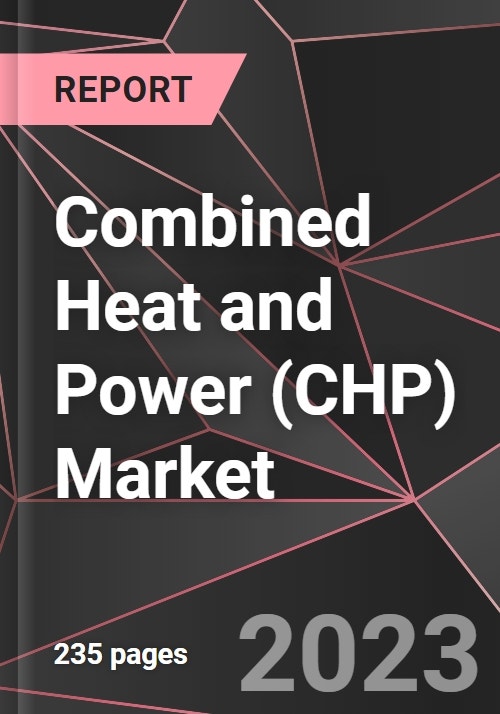Report on Energy Efficiency Initiatives and Their Contribution to Sustainable Development Goals in the U.S. Northeast
1.0 Executive Summary
An analysis by Acadia Center reveals that energy efficiency programs in six New England states and New York are making significant contributions toward multiple Sustainable Development Goals (SDGs). By reducing energy consumption and peak demand, these initiatives directly support SDG 7 (Affordable and Clean Energy), SDG 11 (Sustainable Cities and Communities), and SDG 13 (Climate Action). The programs generate substantial economic benefits and reduce environmental impact, although recent budget cuts threaten this progress. This report outlines the programs’ achievements, challenges, and strategic recommendations for enhancing their alignment with global sustainability targets.
2.0 Program Impact on Sustainable Development
2.1 Advancing SDG 7 (Affordable and Clean Energy) and SDG 12 (Responsible Consumption and Production)
The seven states are leveraging energy efficiency as a low-cost resource to enhance energy affordability and promote sustainable consumption. The collective investment and resulting benefits underscore a strong commitment to SDG 7 and SDG 12.
- Total Investment: Nearly $10 billion is slated for investment in energy efficiency initiatives across the region.
- Economic Benefits: Programs in New England alone are projected to generate $19.3 billion in lifetime benefits, making energy more affordable for consumers.
- Electricity Savings: Efficiency investments in New England are expected to yield 20 TWh of lifetime electricity savings.
- Total Energy Savings: The combined efforts of New England and New York are projected to achieve 700 trillion Btu in lifetime savings across all fuel types, directly promoting more responsible energy consumption patterns.
2.2 Contribution to SDG 13 (Climate Action)
Energy efficiency is a critical tool for climate change mitigation. By reducing overall energy demand, these programs decrease reliance on fossil fuels and lower greenhouse gas emissions. This aligns with global efforts to achieve net-zero emissions, as appliance efficiency alone could account for 20% of the required reduction in energy demand by 2050. The projected energy avoidance in the Northeast represents a substantial contribution to SDG 13.
- New England States: Projected to avoid 368 trillion Btu of lifetime energy use.
- Combined with New York: The total projected avoided energy use rises to 703 trillion Btu.
3.0 Challenges and Risks to SDG Attainment
Despite their proven success, state-level energy efficiency programs face a pivotal juncture. Reductions in ratepayer-funded programs threaten to reverse progress on energy affordability and climate action, directly undermining the objectives of SDG 7 and SDG 13.
- Massachusetts: A recent decision to cut $500 million from efficiency program budgets is projected to result in a loss of $1.49 billion in lifetime benefits for consumers and the energy system.
- Rhode Island: Proposed cuts of 30% to efficiency programs would eliminate approximately $92 million in benefits, hindering the state’s progress toward its sustainability goals.
4.0 Strategic Recommendations for Advancing SDGs
To maximize the contribution of energy efficiency to the Sustainable Development Goals, greater regional alignment is necessary. Improving data consistency and reporting methodologies would enhance program effectiveness and support SDG 9 (Industry, Innovation, and Infrastructure) by fostering innovation in energy resource management.
- Standardize Metrics: The New England states and New York should collaborate to standardize metrics for program measurement, evaluation, and reporting.
- Improve Data Alignment: Addressing major differences in reporting data is critical to understanding the full regional impact of efficiency programs on sustainability targets.
- Foster Inter-State Collaboration: Adopting universal reporting methodologies and benefit-cost tests would create a more powerful collective impact, improve program design, and unlock new opportunities for states to learn from one another, thereby accelerating progress toward the SDGs.
Analysis of Sustainable Development Goals in the Article
1. Which SDGs are addressed or connected to the issues highlighted in the article?
- SDG 7: Affordable and Clean Energy: The article’s central theme is energy efficiency, which is a cornerstone of ensuring access to affordable, reliable, and sustainable energy. It discusses how efficiency measures are saving customers money on utility bills, making energy more affordable.
- SDG 11: Sustainable Cities and Communities: By reducing peak demand on the electric grid, energy efficiency contributes to making energy infrastructure more resilient and sustainable, which is crucial for communities.
- SDG 12: Responsible Consumption and Production: The article highlights the efficient use of energy resources. The reported savings of “700 trillion Btu in lifetime savings” directly reflect more sustainable consumption patterns.
- SDG 13: Climate Action: Energy efficiency is presented as a critical tool for climate action. The article notes its potential to “help meet global emissions targets” and contribute to the reduction in energy demand required to “achieve net-zero emissions by 2050.”
- SDG 17: Partnerships for the Goals: The article calls for collaboration among New England states and New York to “better standardize metrics utilized for program measurement, evaluation, and reporting,” which is a form of partnership to enhance the effectiveness of sustainable development policies.
2. What specific targets under those SDGs can be identified based on the article’s content?
-
SDG 7: Affordable and Clean Energy
- Target 7.3: “By 2030, double the global rate of improvement in energy efficiency.” The entire article is a case study of this target in action, detailing how states are investing in and benefiting from energy efficiency programs that lead to significant energy savings.
-
SDG 11: Sustainable Cities and Communities
- Target 11.6: “By 2030, reduce the adverse per capita environmental impact of cities…” The reduction of energy consumption through efficiency, as detailed in the article, directly lowers the environmental footprint of the region’s communities.
-
SDG 12: Responsible Consumption and Production
- Target 12.2: “By 2030, achieve the sustainable management and efficient use of natural resources.” The article’s focus on realizing “700 trillion Btu in lifetime savings across all fuels” is a direct example of achieving more efficient use of natural energy resources.
-
SDG 13: Climate Action
- Target 13.2: “Integrate climate change measures into national policies, strategies and planning.” The state-level “three-year energy efficiency plans” and ratepayer-funded programs discussed in the article are examples of integrating climate change mitigation measures into regional and state-level planning.
-
SDG 17: Partnerships for the Goals
- Target 17.19: “By 2030, build on existing initiatives to develop measurements of progress on sustainable development…” The recommendation that states “come together to better standardize metrics utilized for program measurement, evaluation, and reporting” directly addresses the need for better measurements of progress.
3. Are there any indicators mentioned or implied in the article that can be used to measure progress towards the identified targets?
-
For Target 7.3 (Energy Efficiency):
- Investment in efficiency: The article states that the seven states “are poised to invest almost $10 billion in efficiency overall.”
- Monetary benefits: The analysis shows New England programs are “generating an estimated $19.3 billion in lifetime benefits.”
- Energy savings (electricity): The article quantifies savings as “20 TWh of lifetime electricity savings from efficiency investments in New England.”
- Energy savings (all fuels): The report indicates a total of “703 TBtu” in lifetime savings with the inclusion of New York State.
-
For Target 13.2 (Integrate Climate Measures):
- Existence of policies and plans: The article’s analysis is based on data from each state’s “three-year energy efficiency plan, annual program reports and other filings,” implying that the existence and content of these plans are indicators of policy integration.
-
For Target 17.19 (Develop Measurements):
- Standardization of metrics: The article implies a lack of progress by noting that “Major differences in reporting data persist” and calls for “more universal reporting methodologies and benefit cost tests” as a way forward. The development of these standardized metrics would be a key indicator of progress.
SDGs, Targets, and Indicators Table
| SDGs | Targets | Indicators |
|---|---|---|
| SDG 7: Affordable and Clean Energy | 7.3: Double the global rate of improvement in energy efficiency. |
|
| SDG 11: Sustainable Cities and Communities | 11.6: Reduce the adverse per capita environmental impact of cities. |
|
| SDG 12: Responsible Consumption and Production | 12.2: Achieve the sustainable management and efficient use of natural resources. |
|
| SDG 13: Climate Action | 13.2: Integrate climate change measures into national policies, strategies and planning. |
|
| SDG 17: Partnerships for the Goals | 17.19: Build on existing initiatives to develop measurements of progress on sustainable development. |
|
Source: utilitydive.com







